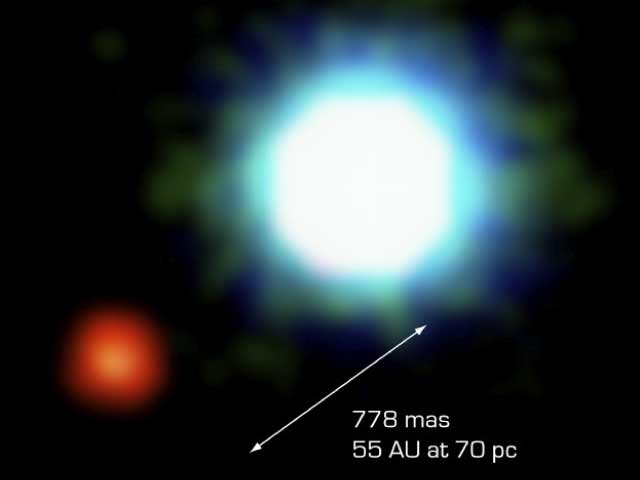Explanation: It's the faint red object, not the bright white one that might be a historic find. The white object is surely a brown dwarf star. Quite possibly, however, the red object is the first direct image of a planet beyond our Solar System. The intriguing possibility was first reported last year, but many astronomers weren't then convinced that the "planet" was not just a background star. Earlier this year, the 2M1207 star system was imaged twice more in an effort to resolve the issue. To the delight of the scientific team, the objects kept the same separation, indicating that they are gravitationally bound. The faint red object 2M1207b is therefore 100 times fainter, intrinsically, than the bright white brown dwarf 2M1207b -- a characteristic well explained by a planet roughly five times the mass of Jupiter. The discovery - still subject to further conformation - is considered a step toward the more ambitious goal of imaging Earth-like planets orbiting distant stars. The above image was taken with the high-resolution adaptive-optic NaCo camera attached to the 8-meter Very Large Telescope Yepun in Chile.
1999 2000 2001 2002 2003 2004 2005 2006 2007 2008 2009 2010 2011 2012 2013 2014 2015 2016 2017 2018 2019 2020 2021 2022 2023 2024 2025 |
Январь Февраль Март Апрель Май Июнь Июль Август Сентябрь Октябрь Ноябрь Декабрь |
NASA Web Site Statements, Warnings, and Disclaimers
NASA Official: Jay Norris. Specific rights apply.
A service of: LHEA at NASA / GSFC
& Michigan Tech. U.
|
Публикации с ключевыми словами:
extrasolar planet - Планеты у других звезд
Публикации со словами: extrasolar planet - Планеты у других звезд | |
См. также:
Все публикации на ту же тему >> | |
